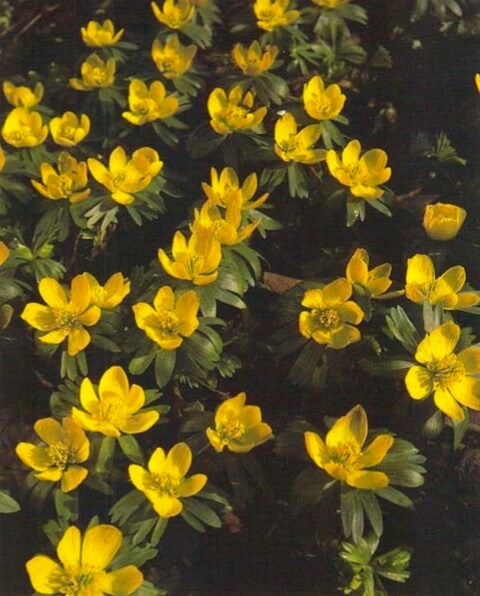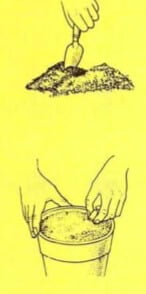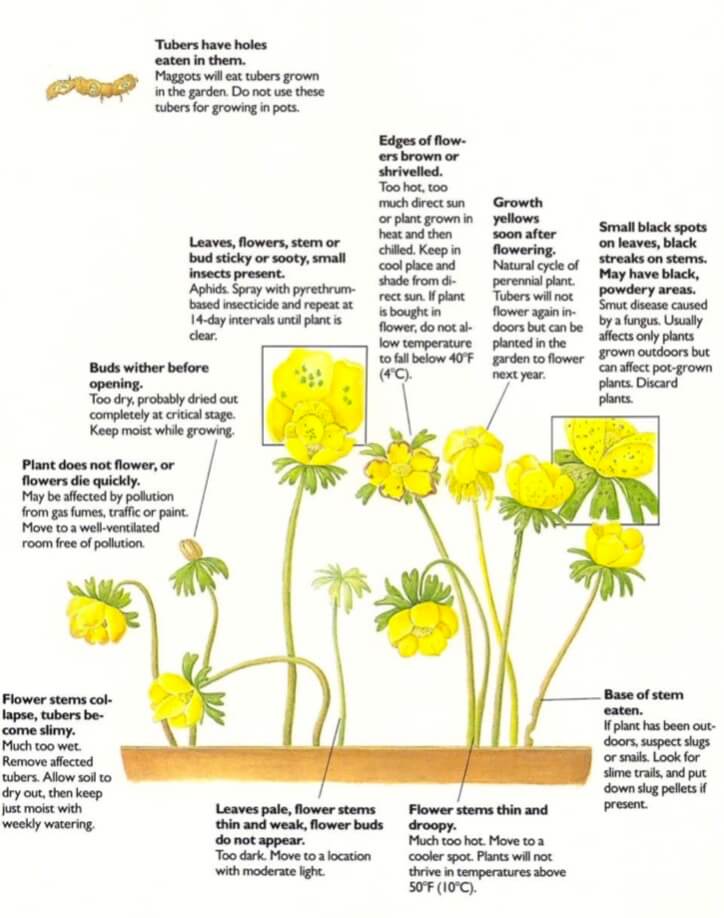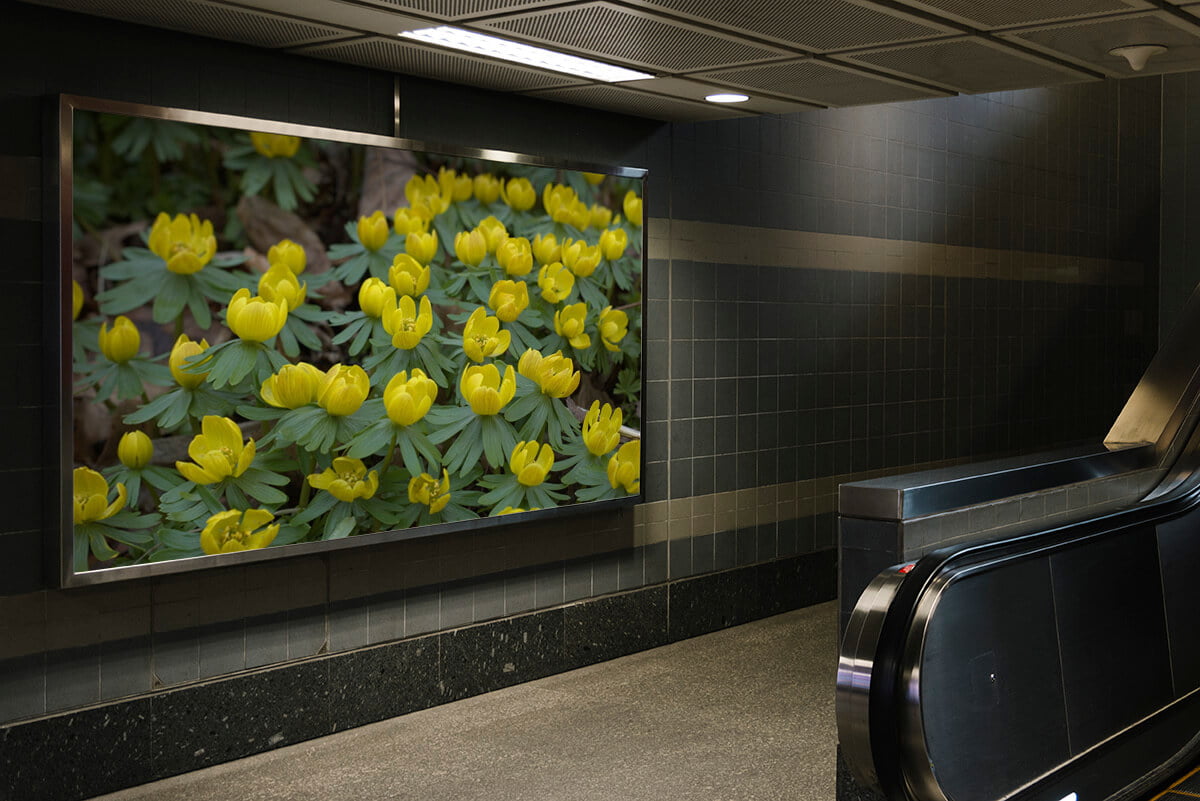[Ebook Việt Hoá] The Instant Guide to Healthy Houseplants (Hướng dẫn tức thời để chăm cây trong nhà khoẻ mạnh), Chi Veltheimia
[Ebook Việt Hoá] The Instant Guide to Healthy Houseplants: Eranthis hyemalis (Winter aconite)
- Nguồn: [Ebook Việt Hoá] The Instant Guide to Healthy Houseplants (Hướng dẫn tức thời để chăm cây trong nhà khoẻ mạnh)
- Biên tập: Dũng Cá Xinh
- Biên dịch: Team Codai.net
English
Delicately flowering winter aconites are usually thought of as plants for the bulb or rock garden, yet they will grow indoors in pots or containers provided conditions are right. They need a fairly acid soil, a steady but moderate supply of moisture and a cool location in indirect light. They will not survive in a heated room. The plants are grown from tubers, and each tuber will produce a single flower. Plant up to 10 tubers, 3/4 of an inch (2cm) apart, just under the soil in a 3 1/2-in (9-cm) pot in early autumn. Keep the pot in a cool place (outside on the windowsill or balcony or in an unheated porch or room) for 6-8 weeks at 40°F (4°C) or below. Bring into the coolest room for flowering.

Light
Does best in moderate light, as on a windowsill that does not receive direct sun. Plants will not thrive in direct sunlight.
Temperature
Maximum for flowering, 50°F (10°C); can survive much colder temperatures. Keep in coolest room; average living rooms are too hot.
Water
Keep soil barely moist and al- low it to become almost dry before watering again. Once a week is sufficient.
Humidity
Good ventilation is necessary. Do not spray.
Feeding
Give liqUid garden fertilizer every 10 days at half the manufacturer’s recommended strength from when growth is visible until flowers die.
Soil
Fairly acid soil is preferable. Use either commercial potting soil mixed with leafmold (or peat moss) or a 50:50 mixture of peat-based and loam-based potting soils.
After flowering
Pinch off dead flower heads but continue feeding until leaves turn yellow naturally. Plants grown in pots will rarely flower again indoors, but tubers can be divided and planted in the garden to flower the following year.
Potting
- 1. For acid soil, mix equal parts leaf mold and loam. Or use peat and loam. Do not collect fallen leaves from roadside; they may be contaminated.
- 2. Fill 3 1/2 (9 cm) pot; plant tubers 3/4 of an inch (2 cm) apart and just cover with soil.

What Goes Wrong

- Tubers have holes eaten in them: Maggots will eat tubers grown in the garden. Do not use these tubers for growing in pots.
- Leaves, flowers, stem or bud sticky or sooty, small insects present: Aphids. Spray with pyrethrum- based insecticide and repeat at 14-day intervals until plant is clear.
- Buds wither before opening: Too dry, probably dried out completely at critical stage. Keep moist while growing.
- Plant does not flower, or flowers die quickly: May be affected by pollution from gas fumes, traffic or paint. Move to a well-ventilated room free of pollution.
- Flower stems collapse, tubers become slimy: Much too wet. Remove affected tubers. Allow soil to dry out, then keep just moist with weekly watering.
- Edges of flowers brown or shrivelled: Too hot, too much direct sun or plant grown in heat and then chilled. Keep in cool place and shade from direct sun. If plant is bought in flower, do not allow temperature to fall below 40°F.
- Growth yellows soon after flowering: Natural cycle of perennial plant. Tubers will not flower again indoors but can be planted in the garden to flower
- Small black spots on leaves, black streaks on stems: May have black, powdery areas. Smut disease caused by a fungus. Usually affects only plants grown outdoors but can affect pot-grown
- Leaves pale, flower stems thin and weak, flower buds do not appear: Too dark. Move to a location with moderate light.
- Flower stems thin and droopy: Much too hot. Move to a cooler spot. Plants will not thrive in temperatures above 50°F (10°C)
- Base of stem eaten: If plant has been outdoors, suspect slugs or snails. Look for slime trails, and put down slug pellets if present.
Tiếng Việt
Cây hoa winter aconites thường được coi là cây trồng lấy củ hoặc cây vườn đá nhưng chúng cũng có thể phát triển với môi trường trong nhà và chậu cây hoặc nơi trồng cung cấp điều kiện sống phù hợp. Chúng cần một loại đất khá chua, cung cấp độ ẩm ổn định nhưng vừa phải và vị trí thoáng mát dưới ánh sáng gián tiếp. Chúng sẽ không sống được trong căn phòng được sưởi ấm. Cây được trồng từ củ và mỗi củ sẽ ra một bông hoa duy nhất. Trồng khoảng 10 củ, cách nhau 3/4 inch (2cm), ngay dưới đất 1/2 inch (9 cm) vào đầu mùa thu. Giữ chậu ở nơi mát mẻ (bên ngoài bệ cửa sổ hoặc ban công hoặc trong hiên hoặc phòng không được sưởi ấm) trong 6-8 tuần ở nhiệt độ 40 ° F (4 ° C) hoặc thấp hơn. Mang vào phòng mát nhất để ra hoa.

Ánh sáng
Tốt nhất ở nơi có ánh sáng vừa phải, như trên bệ cửa sổ không có ánh nắng trực tiếp. Cây sẽ không phát triển tốt dưới ánh nắng trực tiếp.
Nhiệt độ
Ra hoa ở nhiệt độ tối đa là 50 ° F (10 ° C); có thể tồn tại ở nhiệt độ lạnh hơn nhiều. Giữ trong phòng mát nhất; điều kiện phòng khách là quá nóng.
Nước
Giữ đất vừa ẩm và để đất gần như khô trước khi tưới lại. Mỗi tuần một lần là đủ.
Độ ẩm
Hệ thống thông gió tốt là cần thiết. Không xịt.
Bón phân
Sử dụng phân bón vườn dạng lỏng cứ 10 ngày một lần với liều lượng bằng một nửa khuyến cáo của nhà sản xuất kể từ khi cây sinh trưởng cho đến khi hoa tàn.
Đất
Tốt hơn là đất chua. Sử dụng đất bầu trộn với nấm mốc lá (hoặc rêu than bùn) hoặc hỗn hợp 50:50 của đất bầu từ than bùn và đất mùn.
Sau khi ra hoa
Nhặt bỏ những đầu hoa đã héo nhưng tiếp tục bón phân cho đến khi lá chuyển sang màu vàng tự nhiên. Cây trồng trong chậu sẽ ít khi ra hoa trong nhà, nhưng có thể chia củ và trồng ra vườn để ra hoa vào năm sau.
Thay chậu
- 1. Đối với đất chua, trộn đều phần lá mốc và đất mùn. Hoặc sử dụng than bùn và đất mùn. Không nhặt lá rụng ven đường; chúng có thể bị ô nhiễm.
- 2. Đổ đầy 1/2 inch (9 cm) nồi; trồng các củ cách nhau 3/4 inch (2 cm) và chỉ cần phủ đất lên.

Những vấn đề có thể xảy ra

- Củ có lỗ bị ăn: Giòi sẽ ăn các loại củ được trồng trong vườn. Không sử dụng những củ này để trồng trong chậu.
- Lá, hoa, thân hoặc chồi dính hoặc thối nhũn, xuất hiện côn trùng nhỏ: Rầy mềm. Phun thuốc trừ sâu pyrethrum và lặp lại 14 ngày một lần cho đến khi cây sạch.
- Nụ héo trước khi nở: Quá khô, có thể đã khô hoàn toàn ở giai đoạn quan trọng. Giữ ẩm trong khi trồng.
- Cây không ra hoa hoặc hoa nhanh tàn: Có thể bị ảnh hưởng bởi ô nhiễm từ khói khí, giao thông hoặc sơn. Chuyển đến phòng thông thoáng, không bị ô nhiễm.
- Cành hoa xẹp xuống, củ trở nên nhầy nhụa: Quá ẩm ướt. Loại bỏ các củ bị ảnh hưởng. Để cho đất khô, sau đó chỉ cần giữ ẩm bằng cách tưới nước hàng tuần.
- Viền hoa có màu nâu hoặc nhăn lại: Quá nóng, quá nhiều ánh nắng trực tiếp hoặc cây trồng trong nhiệt rồi ướp lạnh. Để nơi thoáng mát và tránh ánh nắng trực tiếp. Nếu cây mua đang có hoa, không được để nhiệt độ xuống dưới 40 ° F (4 ° C).
- Trở nên vàng ngay sau khi ra hoa: Chu kỳ tự nhiên của cây lâu năm. Củ sẽ không ra hoa trong nhà nữa nhưng có thể trồng ngoài vườn để ra hoa.
- Các đốm đen nhỏ trên lá, vệt đen trên thân: Có thể có những vùng bị bệnh phấn đen. Bệnh than do nấm gây ra. Thường chỉ ảnh hưởng đến cây trồng ngoài trời nhưng có thể ảnh hưởng đến cây trồng trong chậu.
- Lá nhợt nhạt, cành hoa mỏng và yếu, không xuất hiện nụ hoa: Quá tối. Di chuyển đến vị trí có ánh sáng vừa phải.
- Cành hoa mỏng và rũ xuống: Quá nóng. Di chuyển đến một nơi mát mẻ hơn. Cây sẽ không phát triển ở nhiệt độ trên 50 ° F (10 ° C)
- Phần thân cây bị ăn: Nếu cây trồng ở ngoài trời, nghi ngờ có sên hoặc ốc sên. Tìm các đường mòn và đặt viên sên.



